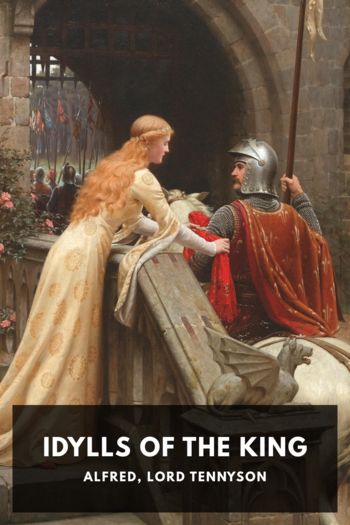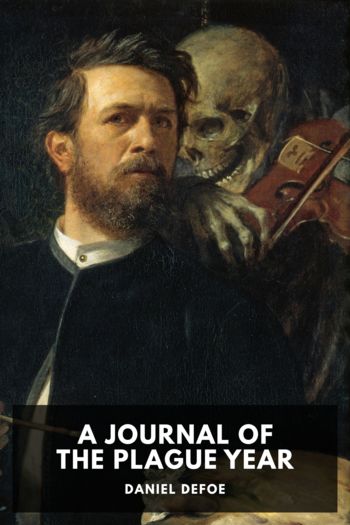Selkirk's Island, Diana Souhami [the best books to read TXT] 📗

- Author: Diana Souhami
Book online «Selkirk's Island, Diana Souhami [the best books to read TXT] 📗». Author Diana Souhami
A year later, on 6 December 1723, Sophia’s Petition was heard in Court. The Will in her favour was read out. She claimed she married Selkirk on 4 March 1717. He had then gone to sea with the Enterprise. He returned after eight months and stayed with her in London for best part of a year.
This Frances, she said, knew he was already married. She had ‘contracted an acquaintance’ with Selkirk while he waited for the Weymouth to sail. He must have been drunk if he went through a ceremony with her. She had inveigled him into it.
Sophia wanted an injunction to prevent Frances and her new husband taking out further proceedings against her, and to stop them seizing such assets as she had. They were harassing her. They had caused her to be wrongfully imprisoned and had deprived her of her husband’s estate.
Frances’s reply was sworn at Plymouth in February 1724. She could not say, for she had no proof, whether Selkirk had ever married Sophia. But when he courted her, Frances, at her public house in Oarston, he ‘swore he was a Single and an Unmarryed Person’. He was not drunk. He knew what he was doing. Nor had she known of any previous Will. All she knew was of the Will she had. It revoked all other Wills. It had been witnessed, registered and probated. He had not made any subsequent Will, gift, or bequest. She and her new husband wished to keep the forty pounds of Selkirk’s wages they had received and to have it clarified by the Court that they were entitled to benefit from his Estate and Effects according to the last Will he had made. They wanted all costs and charges paid by Sophia.
Sophia lost everything except her belief that she was Mrs Selkirk. The winter of 1724 was bitterly cold. Among the begging letters she wrote was one to the Reverend Say in the Parish of Westminster. She was, she said, ‘a person much reduced to want’. She was ‘the widow of Mr Selchrig who was left four years and four months on the island of John Ferinanda’. She was sorry to trouble Mr Say. She prayed for his help. She was a woman of piety and Christian belief. Her three uncles in Scotland had been ministers.†
Selkirk was adept at slipping away from the consequences of a brawl in church, violent assault, false promises or bigamy. Had he survived, in a different port or public house he might have desired some other Frances or Sophia, tempted her with plunder, netted her in a parody of law, notched her like an Island goat.
Selkirk had lived with nothing and with help from no one. The constant of his life had been the call of the sea. It took him to the prospect of riches, to battles he thought manly, to the heart of The Island, to the grave of the ocean.
But at his end all that was focused on was an inventory of booty: rings, clothes, wages and a silver-hiked sword. His legacy was a wrangle for it, claims and counter claims to it, the reduction to poverty of a naive woman, a litigious justification of greed. It was an echo of the wrangles for plunder on all the voyages he had ever made. It obscured his quest for the Manila galleon, his navigation of the ocean by the sun and stars, his isolation on the implacable Island.
He could not bequeath The Island in words or kind. The Island where he had watched for a sail that only one day came, where his courage was tested, where he had survived abandoned, sustained and protected by its clear water streams, its creatures that foraged, its plants and its trees.
*Oronoque was a fictional river.
*Maria Defoe married a salter, a Mr Langley.
*Defoe defeats bibliography. He probably wrote some 560 books, pamphlets and journals. Sixteen were published in 1719, the same year as Robinson Crusoe.
*The Shortest Way with the Dissenters, 1703, satirised extreme Tory views and provoked official wrath. Threatened with prison, Defoe went into hiding in Spitalfields. An informant who flushed him out got a reward of £50. Defoe was pilloried on three consecutive days, then sent to Newgate gaol. His satire was publicly burned.
*Among the anomalies in the first edition, Crusoe’s wrecked ship was carried out of sight by the storm, but was visible a few pages later. He stripped off his clothes to swim to the wreck, then filled his pockets with biscuits from it.
*The quantity of scholarship about Robinson Crusoe is truly extraordinary. A Concordance (1998), more than a thousand pages long, lists the number of times Defoe uses words in the book: Providence (55 times), Island (183), Time (294), Earthquake (8).
*See Virginia Woolf, The Common Reader (1925). This essay was first published in The Times Literary Supplement, 24 April 1919.
*Defoe had a brick factory in Tilbury in 1694. He knew about firing clay.
*A maker and seller of candles.
*A Prerogative Court was the court of an archbishop for the probate of wills. In 1857 this jurisdiction was transferred to the Court of Probate.
*Paid as compensation for disablement or injury while on duty.
7
THE ISLAND
THE ISLAND
1896 A Magnificent Wilderness
THE ISLAND changed, yet stayed the same. Unfelled sandalwood trees (Santalum Fernandezianum) laid down their annular rings. Palms and ferns tangled more densely in valleys and gulches. Clumps of Dendroseris micratha spread tapering leaves over eroded rocks.
Year on year plunderers thrived. The Island’s fur seals (Arctocephalus philippii) were killed for their pelts, massacred almost to extinction. In 1801 a single ship carried a million skins to the London market. Only seals on remote rocks and in hidden bays, survived to regenerate. The huge sea lions (Otaria jubata) were all slaughtered, the sandalwood was felled, the lobsters were trapped and the whales harpooned.
Visitors to The Island came and went. They praised its ‘savage irregular beauty’, its woods and verdant valleys and life saving streams. The





Comments (0)